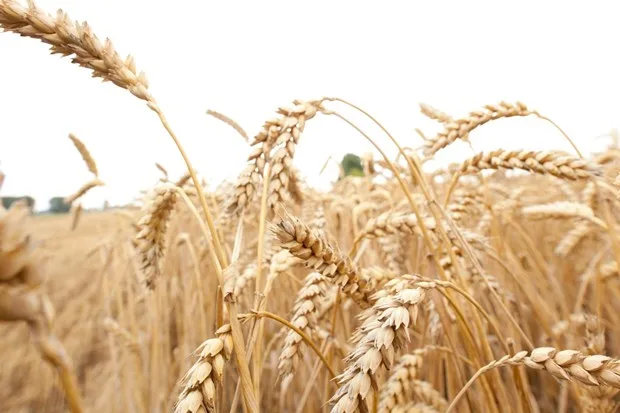Published on 28th October 2022
Local Insights
Three agronomy tasks before shutting the gate in the south

Matt Siggs examines oilseed rape diseases, grass-weed control applications, and cover crops in the south this November.
Three agronomy tasks before shutting the gate in the south Content
Crop Progress
Thankfully it has been a pretty easy autumn for growers to get winter crops established. As we approach the end of October, we’re probably about 90% drilled up in the southwest.A few growers with more difficult grass-weeds, particularly in the eastern part of the region, have delayed drilling until the mid-October, but the weather has been mostly kind.Some cereal crops are reaching 2-4 true leaves, and aphids are being found, so keep an eye on T-Sum calculators for barley yellow dwarf virus risk. There has also been quite a lot of slug pressure in cereals so keep monitoring for that too.Oilseed rape, where it received moisture at the right time, is starting to motor. Slugs and cabbage stem flea beetles have attacked some crops, but I haven’t heard of any being written off as yet.
Matt’s agronomy tips for November
1. Monitor for key oilseed rape diseases
So far, there hasn’t been much Phoma or light leaf spot reported but that’s often the case until we reach November. Earlier drilled crops should be at less risk from Phoma as they will be bigger but those crops might be at higher risk from light leaf spot.Use the AHDB forecasts to understand risk from both and also our Spotcheck service, in conjunction with ADAS, to assess actual risk in crops. If you would like a sample kit please get in touch with me.It seems Belkar (halauxifen-methyl + picloram) will be a popular option for oilseed rape growers this autumn – allowing them to wait until post-emergence to assess establishment before applying herbicide.That might have a knock-on effect for fungicide choice as it can’t be mixed with products, such as tebuconazole, with known growth regulatory effects.As temperatures drop off light leaf spot will become more of a risk, especially with thick canopies.Prothioconazole-based products, such as Proline (prothiocoanzole) and 0.5 L/ha Aviator (bixafen + prothioconazole) are excellent options where you need to spray. Both will control Phoma and light leaf spot.
2. Apply grass-weed control top ups as necessary
For those targeting annual meadowgrass and broadleaf weeds, early post-emergence sprays combined with an insecticide for barley yellow dwarf virus as a one-pass weed control strategy is quite common in the southwest.Where that is your approach, the metribuzin component in Alternator Met or Octavian Met (both flufenacet + diflufenican + metribuzin) provides a small amount of contact activity as well as residual activity. Flufenacet is excellent against annual meadowgrass but add in other partners to widen the weed spectrum as required. Alternatively 0.3 L/ha of Liberator (flufenacet + diflufenican) plus mixers is also a sound choice.There are pockets of black-grass and Italian ryegrass in parts of the southwest. Hopefully these have been treated with a pre-emergence, such as Proclus (aclonifen) + Liberator, but with higher soil temperatures this will likely need to be topped up with some more flufenacet.If Liberator was used at pre-emergence a six-week gap before following up with the same product is required. An alternative is to use either Alternator Met or Octavian Met with an appropriate mixer partner. We know from NIAB research that the more modes of action you can use the less likely you are to be selecting reduced sensitivity, especially to flufenacet.Where grass-weeds are already coming through in large numbers, it will be worth considering burning off with glyphosate and starting again. Making that decision now, as hard as it will be, will likely require a lower dose of glyphosate than if doing it in the spring as stems start to extend. But still use an appropriate dose to do the job.For November drilled wheat after maize or roots, if there is a risk of difficult grass-weeds, pre-emergence will give you the best control. As the weather turns cooler there will be a longer period for the residual to be sitting protecting the root zone, and will help stop the weeds emerging while there is no crop competition. Proclus (aclonifen) plus Liberator is a good option, while if you don’t have difficult grass-weeds, straight Liberator could be used.
3. Assess cover crops species for optimum dose
It hasn’t been the easiest year to establish cover crops with the dry conditions in August. A kind autumn has helped since then, so when we get nearer to Christmas assess what growth has happened and what species are present.Make a call on glyphosate application rates based on that. It needs more refinement than just treating it the same as an overwintered stubble. You don’t want to leave survivors and create a green bridge to the following crop, if possible.If you’re growing spring cereals as the following crop, it’s likely going to need at least two to four weeks to break down ahead of planting, to allow ground to dry out enough for drilling and to avoid nitrogen lock up.
Weed Screen Tour
Ella and James give a tour of Bayer's latest grass-weed matrix trial.



